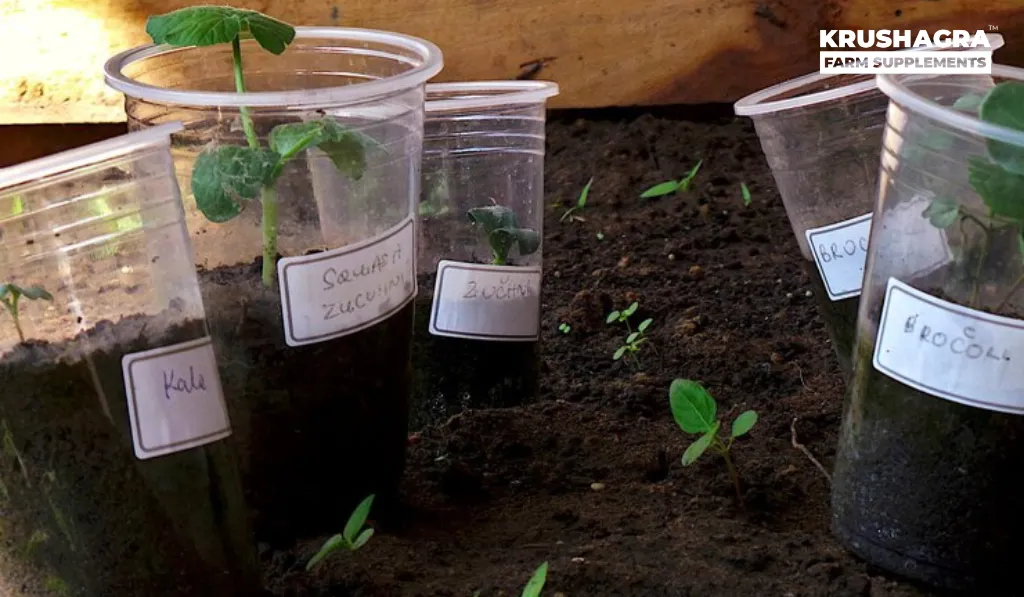Introduction:
In the dynamic landscape of modern agriculture, where sustainability and environmental consciousness are becoming paramount, the spotlight is increasingly turning towards biofertilizers. These natural alternatives to conventional chemical fertilizers not only play a pivotal role in enhancing soil fertility but also contribute significantly to sustainable farming practices. As we delve into the intricate world of biofertilizers, we’ll explore the various types available and underscore their undeniable importance for the agricultural sector.
Understanding Biofertilizers:
Biofertilizers represent a category of fertilizers that utilize living microorganisms to improve soil fertility and plant growth. Unlike their chemical counterparts, which often come with environmental concerns, biofertilizers offer a sustainable and eco-friendly approach to agriculture. The primary modes of action include nitrogen fixation, phosphate solubilization, and the production of growth-promoting substances.
Types of Biofertilizers:
- Nitrogen-Fixing Biofertilizers:
Nitrogen is a vital component for plant growth, and biofertilizers that facilitate nitrogen fixation have a profound impact on enhancing soil fertility. Examples of nitrogen-fixing biofertilizers include Rhizobium, Azotobacter, and Azospirillum. These microorganisms establish symbiotic relationships with plant roots, converting atmospheric nitrogen into a form that plants can readily absorb.
- Phosphate-Solubilizing Biofertilizers:
Phosphorus is another critical nutrient for plant development, and phosphate-solubilizing biofertilizers play a crucial role in making this nutrient more accessible to plants. Microorganisms like Phosphobacteria and Mycorrhizal fungi work to solubilize insoluble phosphates in the soil, thereby promoting healthier root development and overall plant growth.
- Potassium-Releasing Biofertilizers:
Potassium is essential for various physiological processes in plants. Some bacteria, such as Bacillus mucilaginosus, possess the capability to release potassium from minerals in the soil. This biofertilizer enhances potassium availability to plants, promoting improved stress tolerance and overall crop yield.
- Growth-Promoting Biofertilizers:
Beyond nutrient fixation, certain biofertilizers, like Plant Growth-Promoting Rhizobacteria (PGPR), contribute to plant growth by producing substances that stimulate various physiological processes. These bacteria enhance nutrient uptake, improve root architecture, and confer increased resistance against pathogens.
Importance of Biofertilizers:
- Environmental Sustainability:
One of the primary advantages of biofertilizers lies in their contribution to sustainable agriculture. Unlike chemical fertilizers that often pose risks to the environment, biofertilizers reduce pollution and contribute to the conservation of natural resources. This aligns with the global push towards eco-friendly farming practices.
- Global Food Security:
As the world population continues to grow, ensuring global food security becomes a pressing concern. Biofertilizers, by promoting sustainable and efficient farming practices, play a crucial role in addressing this challenge. By enhancing nutrient availability, improving soil health, and increasing crop yields, biofertilizers contribute to the production of more food with fewer environmental resources.
- Regulatory Compliance and Certification:
With the increasing emphasis on sustainable and organic agriculture, regulatory bodies are implementing standards and certifications for biofertilizers. Biofertilizer companies that adhere to these standards not only ensure the quality of their products but also gain the trust of consumers. Certification adds credibility to the company’s commitment to environmentally friendly and sustainable agricultural practices.
- Research and Innovation:
The field of biofertilizers is ripe for ongoing research and innovation. Biofertilizer companies can actively engage in research and development to enhance the effectiveness of existing biofertilizers and explore new microbial strains with unique properties. Staying at the forefront of scientific advancements ensures that the company remains a leader in the biofertilizer industry.
- Soil Health Improvement:
Biofertilizers play a crucial role in improving and maintaining soil health. Unlike chemical fertilizers that may degrade soil quality over time, biofertilizers promote beneficial microbial activity, enhancing soil structure, fertility, and water retention capacity. The result is healthier, more productive soils that can sustain crops over the long term.
- Cost-Effectiveness:
Integrating biofertilizers into agricultural practices can lead to cost savings for farmers. The living organisms in biofertilizers can multiply in the soil, reducing the need for repeated applications. This inherent ability to self-sustain makes biofertilizers a cost-effective alternative in the long run.
- Drought Resistance and Climate Resilience:
As climate change continues to pose challenges to global agriculture, the need for resilient farming practices becomes paramount. Biofertilizers play a role in enhancing the drought resistance of crops. By improving soil structure and water retention, these fertilizers help plants better withstand periods of water scarcity. This resilience contributes to the adaptability of agriculture in the face of changing climate patterns.
- Promotion of Organic Farming:
The growing consumer demand for organic produce has led to an increased interest in organic farming practices. Biofertilizers align seamlessly with organic farming principles as they are derived from natural sources and do not introduce harmful chemicals into the environment. For biofertilizer companies, this presents an opportunity to support the organic farming movement and cater to a market that values sustainability and health.Enhanced Nutrient Uptake:
Biofertilizers contribute to better nutrient uptake by plants. The microorganisms in these fertilizers improve the availability and absorption of nutrients, leading to healthier plant growth. Additionally, this enhanced nutrient uptake contributes to the nutritional quality of the harvested crops, addressing concerns related to food security and quality.
Reduced Environmental Impact:
The use of biofertilizers mitigates the environmental impact associated with the overuse of chemical fertilizers. The risk of soil and water pollution is significantly reduced, contributing to a healthier and more sustainable ecosystem. By minimizing the ecological footprint of agriculture, biofertilizers support a harmonious coexistence between farming activities and the environment.
Conclusion:
In a world where the agricultural industry is at a crossroads, balancing the need for increased food production with environmental sustainability is crucial. Biofertilizers emerge as a beacon of hope, offering a holistic approach to soil fertility, plant nutrition, and ecological balance. Their diverse types and undeniable importance underscore their potential to revolutionize the way we cultivate crops.
As a biofertilizers company, embracing and championing these natural solutions not only positions the company as a key player in the agricultural sector but also contributes to a more sustainable and resilient future for global agriculture. The journey towards a greener planet begins with choices, and the choice to promote and utilize biofertilizers is a step in the right direction – a direction that leads to a harmonious coexistence between agriculture and the environment.






